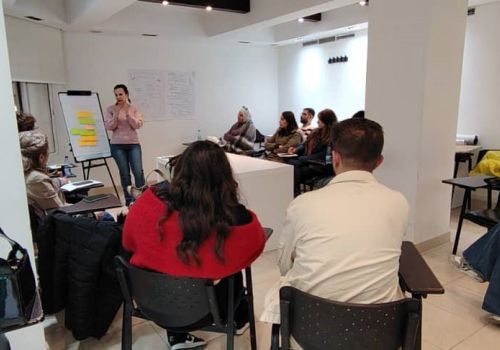What is solutions journalism and why should you care?
2022-06-16 11:19

bySOLUTIONS JOURNALISM NETWORK
Solutions journalism investigates and explains, in a critical and clear-eyed way, how people try to solve widely shared problems. While journalists usually define news as “what’s gone wrong,” solutions journalism tries to expand that definition: responses to problems are also newsworthy. By adding rigorous coverage of solutions, journalists can tell the whole story.
Solutions journalism complements and strengthens coverage of problems. Journalists are often frustrated when painstaking investigations of a problem don’t produce change. We expose our city’s failures to save children from lead paint, or to protect high school football players from concussions, or to recover from the closing of a major factory — but, too often, officials simply dismiss these investigations, saying “we’re doing the best we can.”
Now add solutions journalism to the investigation, showing how other cities are solving these problems. That’s profoundly embarrassing to public officials. Excuses won’t cut it. Change happens.
Solutions stories don’t celebrate responses to problems, or advocate for specific ones; they cover them, investigating what was done and what the evidence says worked and didn’t work about it, and why. They report on the limitations of a response.
These stories often start with data showing which places are doing a better job. They’re often structured like puzzles or mysteries that tackle questions like: Where is the high-school dropout rate decreasing? How and why is that happening? What is the school or district or state doing differently that’s leading to a better outcome?
Journalists usually choose to report on successful solutions. But a solutions story can also be about partial success, or failure. If our city is about to launch a new initiative, a solutions story might look at how that program has fared elsewhere: where did it work or not work? What made the difference?
Done well, solutions stories provide valuable insights that help communities with the difficult work of tackling problems like homelessness or climate change, skyrocketing housing prices or low voter turnout. We also know from research that solutions stories can change the tone of public discourse, making it less divisive and more constructive. By revealing what has worked, such stories have led to meaningful change.
The four pillars of solutions journalism
- A solutions story focuses on a response to a social problem — and how that response has worked or why it hasn’t.
- The best solutions reporting distills the lessons that makes the response relevant and accessible to others. In other words, it offers insight.
- Solutions journalism looks for evidence — data or qualitative results that show effectiveness (or lack thereof). Solutions stories are up front with audiences about that evidence — what it tells us and what it doesn’t. A particularly innovative response can be a good story even without much evidence — but the reporter has to be transparent about the lack, and about why the response is newsworthy anyway.
- Solutions stories reveal a response’s shortcomings. No response is perfect, and some work well for one community but may fail in others. A responsible reporter covers what doesn’t work about it, and places the response in context. Reporting on limitations, in other words, is essential.
Examples of standout English-language solutions reporting
- ‘This Isn’t a Dying Coal Town,’ It’s a West Virginia Community Rethinking Health Care and Succeeding, published by 100 Days in Appalachia
- Detective Mode, published by The Philadelphia Citizen
- ‘They Saw Me and Thought the Worst’, produced for ProPublica’s Local Reporting Network in partnership with WRKF and WWNO, co-published with The Times-Picayune/The New Orleans Advocate
- Cases of missing trans people are rarely solved. A married pair of forensic genealogists is hoping to change that, published by Xtra
- The invisible shield: how activists and lawmakers are breaking down qualified immunity, published by Amsterdam News
- ‘Soil is our livelihood and we better protect it, or we’re screwed.’, published by Montana Free Press
- Chocpocalypse Now! Quarantine and the Future of Food, published by Gastropod
- ‘I am not alone’: How a California county is helping Hispanic caregivers find peace, published by Democrat & Chronicle
- Be Your Own Boss: More Co-op Businesses Are Returning Workers’ Power, published by Mother Jones and Economic Hardship Reporting Project
- Non-profit grocery store Jubilee Market in Waco fills a gap for affordable, nutritious food, published by Dallas Free Press/Dallas Morning News
- The Group Turning Religious Leaders Into LGBTQ Rights Crusaders, published by Reasons to be Cheerful
Visit the Solutions Journalism Story Tracker collection for more examples of solutions reporting.
This article was originally published by the Solutions Journalism Network
Photo by Daniele Franchi on Unsplash.









